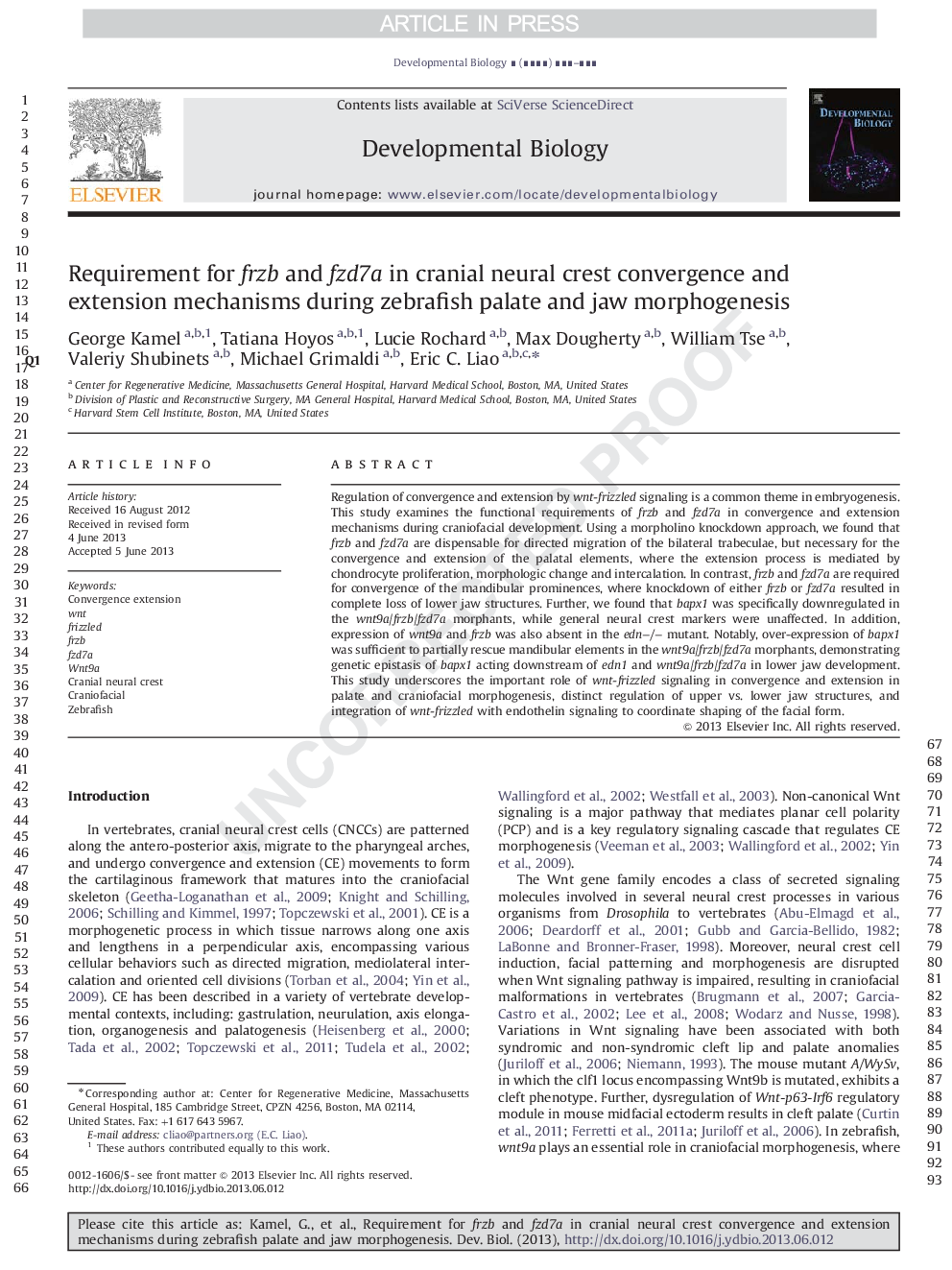| Article ID | Journal | Published Year | Pages | File Type |
|---|---|---|---|---|
| 10931958 | Developmental Biology | 2013 | 11 Pages |
Abstract
Regulation of convergence and extension by wnt-frizzled signaling is a common theme in embryogenesis. This study examines the functional requirements of frzb and fzd7a in convergence and extension mechanisms during craniofacial development. Using a morpholino knockdown approach, we found that frzb and fzd7a are dispensable for directed migration of the bilateral trabeculae, but necessary for the convergence and extension of the palatal elements, where the extension process is mediated by chondrocyte proliferation, morphologic change and intercalation. In contrast, frzb and fzd7a are required for convergence of the mandibular prominences, where knockdown of either frzb or fzd7a resulted in complete loss of lower jaw structures. Further, we found that bapx1 was specifically downregulated in the wnt9a/frzb/fzd7a morphants, while general neural crest markers were unaffected. In addition, expression of wnt9a and frzb was also absent in the ednâ/â mutant. Notably, over-expression of bapx1 was sufficient to partially rescue mandibular elements in the wnt9a/frzb/fzd7a morphants, demonstrating genetic epistasis of bapx1 acting downstream of edn1 and wnt9a/frzb/fzd7a in lower jaw development. This study underscores the important role of wnt-frizzled signaling in convergence and extension in palate and craniofacial morphogenesis, distinct regulation of upper vs. lower jaw structures, and integration of wnt-frizzled with endothelin signaling to coordinate shaping of the facial form.
Related Topics
Life Sciences
Biochemistry, Genetics and Molecular Biology
Cell Biology
Authors
George Kamel, Tatiana Hoyos, Lucie Rochard, Max Dougherty, Yawei Kong, William Tse, Valeriy Shubinets, Michael Grimaldi, Eric C. Liao,
